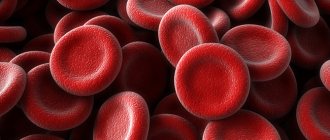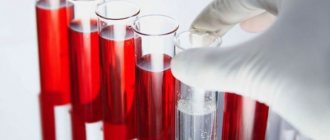Our body is an amazing thing. It is capable of producing all the substances necessary for life, coping with many viruses and bacteria, and finally providing us with a normal life. Human blood consists of formed elements and plasma. Leukocytes are one of these formed elements along with red blood cells and platelets.
What are leukocytes
Several types of formed elements float in the blood, which support the health of the whole organism. White cells that have a nucleus inside are called leukocytes. Their peculiarity is the ability to penetrate the capillary wall and enter the intercellular space. It is there that they find foreign particles and absorb them, normalizing the vital activity of the cells of the human body.
Leukocytes include several types of cells that differ slightly in origin and appearance. The most popular division is based on morphological characteristics.
| Morphology | View | Normal quantity |
| Granular (having granules in the cytoplasm) | Neutrophils | 70% |
| Eosinophils | 1-5% | |
| Basophils | Up to 1% | |
| Non-granular (no granules) | Lymphocytes | 21-35% |
| Monocytes | 4-8% |
The ratio of these cells is the same in all healthy people and is expressed by the leukocyte formula. By changing the number of any type of cells, doctors draw conclusions about the nature of the pathological process.
You need to know the symptoms of high blood pressure in women in order to provide timely help. Correctly provided first aid for a hypertensive crisis can save a person’s life. Read more in the article: “causes of high blood pressure in women.”
It is leukocytes that maintain human health at the proper level. Most infections that enter the human body are asymptomatic due to a timely immune response.
General characteristics
Leukocytes in the blood are a group of cells that are responsible for the human body’s resistance to various pathogenic bacteria, viruses, helminths, parasites and other pathological microorganisms.
They also fight not only infectious agents, but also any foreign object:
- malignant or benign neoplasms of any location;
- transplanted donor organ;
- a foreign object that may accidentally enter the body.
The place of formation of leukocytes is blood stem cells, which are localized in the red bone marrow. In order to fully carry out their work, they undergo a large number of transformations, during which their structure and functions change.
In addition to blood, they are also found in fluids such as:
- urine;
- cerebrospinal fluid;
- pleural effusion;
- feces;
- gastric juice.
However, their concentration in such cases will be significantly lower, for example, for urine analysis, from 4 to 6 leukocytes are acceptable, and no more than 8 white blood cells should be present in the cerebrospinal fluid.
An increase or decrease in such blood components in any of the above structures most often indicates the occurrence of a disease.
In addition to the main task, the functions of leukocytes include:
- release of specific substances to combat various tumors;
- absorption and digestion of the pathogenic agent;
- relief of hemorrhages;
- acceleration of wound healing.
As stated above, white blood cells have several subtypes.
- What foods can increase white blood cells in the blood - List of the 10 most effective
Thus, there are the following types of leukocytes:
- neutrophils - aimed at destroying bacterial infection;
- lymphocytes – responsible for the immune system and immune memory;
- monocytes - absorb and digest particles of foreign cells;
- eosinophils - fight allergen carriers;
- basophils - assist other particles in detecting foreign agents, however, they perform all their “duties” outside the bloodstream - in the internal organs.
It follows from this that subtypes of leukocytes perform their own mission.
Types of leukocytes
All types of such substances, in addition to their functions, differ in the following indicators:
- dimensions;
- core shape;
- way of development.
It is also worth noting about the structural features of each type of white blood cell. For example, neutrophils, eosinophils, basophils and monocytes are born from myeloblasts, the precursor of which is myelopoiesis. This happens under the influence of a stimulator cell in the bone marrow.
The lifespan of leukocytes is on average 2-4 days, and they are often destroyed in the liver, spleen and foci of inflammatory processes. The only exceptions are lymphocytes, some of which live in the human body from birth to death.
In neutrophils, eosinophils and basophils, the entire life cycle takes place in the bone marrow, which is why their immature cells are normally completely absent from the blood. Monocytes continue to exist in the spleen, liver and skeletal system, where they degenerate into macrophages and dendrocytes. Lymphocytes have a longer “life” in the spleen, lymph nodes and thymus.
Leukocytes received their common name - white blood cells - because, unlike red blood cells, they are colorless.
From all of the above, it follows that if there are no leukocytes in the blood, the human body simply will not be able to function.
- How long do leukocytes live and where are they formed? Types and functions of leukocytes
Functions of leukocytes
The importance of leukocytes is explained by their participation in the immune response and protecting the body from any foreign agents. The main functions of white cells are as follows:
- Antibody production.
- Absorption of foreign particles – phagocytosis.
- Destruction and removal of toxins.
Each type of leukocyte is responsible for certain processes that help in carrying out the main functions:
- Eosinophils
. They are considered the main agents for the destruction of allergens. They participate in the neutralization of many foreign components that have a protein structure. - Basophils
. They accelerate the healing process at the site of inflammation, due to the presence of heparin in its structure. Updated every 12 hours. - Neutrophils
. Participate directly in phagocytosis. Capable of penetrating into the intercellular fluid and into the cell where the microbe lives. One such immune cell can digest up to 20 bacteria. Fighting microbes, the neutrophil dies. Acute inflammation provokes a sharp production of such cells by the body, which is immediately reflected in the leukocyte formula as an increased number. - Monocytes
. Helps neutrophils. They are more active if an acidic environment develops at the site of inflammation. - Lymphocytes
. They distinguish their own cells from foreign cells by their structure and participate in the production of antibodies. They live for several years. They are the most important component of immune defense.
Many doctors require you to do a clinical blood test before prescribing treatment. Viral and bacterial diseases cause different changes in the analysis, which makes it possible to make the correct diagnosis and prescribe the necessary medications.
Gonorrhea is an infectious disease that is transmitted during sexual intercourse. Gonorrhea is always unpleasant and should be treated only after a complete diagnosis. Read more in the article: “treatment of gonorrhea with one tablet.”
Place of formation of leukocytes
Advertising:
The place of formation is the main hematopoietic stem cell of the bone marrow (pluripotent), during the disease it is capable of providing hematopoiesis independently. Precursor cells (the same as stem cells) are the next stage of formation. Unipotent cells (hematopoietic germs) become morphologically recognizable and mature into mature leukocytes, which are visible in the peripheral blood.
Their life expectancy, depending on the species, ranges from several hours to several months, is regulated by the leukocyte formula (by taking a general blood test from a finger prick) in clinical laboratories of medical institutions and is deciphered by a doctor. The destruction of white blood cells is called leukolysis.
Video - Leukocytes
The main types of mature leukocytes:
First of all, it is logical to mention that there are five main types of mature leukocytes in the blood. They are determined in tests in the form of a leukocyte formula, so the level of leukocytes in the blood is assessed not only as a whole. The content of these cells is also always calculated. These include (in descending order of quantity):
• Neutrophils
• Lymphocytes
• Monocytes
• Eosinophils
• Basophils.
They have different functions, but they work in collaboration, influence each other, transmit information among themselves, etc. High or low white blood cells in the blood, belonging to one type or another, indicate various diseases, so determining their number is very important in medical practice.
Lack of white blood cells
Leukopenia in an adult is a condition when the number of leukocytes is below 4*109/l. This may be caused by malignant diseases, exposure to radiation, vitamin deficiencies or problems with hematopoietic function.
Advertising:
Leukopenia leads to the rapid development of various infections and a decrease in the body's resistance. A person feels chills, body temperature rises, loss of strength and exhaustion appear. The body tries to compensate for the lack of defense cells, resulting in an enlarged spleen. This condition is very dangerous and requires identification of the cause and treatment.
Chronic fatigue or other conditions that have been bothering you for a long time cannot be ignored. They often occur due to a decrease in the body's defenses.
Origin of white blood cells:
Leukocytes in children and adults are found and studied mainly in the blood, but they are formed outside of it - in a special organ. It is quite impressive in size and weight (weighs about 2.5 kg), and its peculiarity is that it is distributed throughout the body.
We are talking about red bone marrow, which is located inside the tubular and spongy bones of the human body. This is where the production of blood elements occurs. All white blood cells come from a single stem cell. It divides, giving rise to several cell sprouts; its descendants develop, mature, pass into the blood, and eventually begin to realize their functions in a mature state.
Signs of leukocytosis
It is often impossible to determine the presence of leukocytosis based on certain symptoms. In most cases, the pathology occurs unnoticed by the patient. Clinical manifestations are observed when the level is significantly exceeded. This condition can only be provoked by very serious pathologies, the signs of which will not go unnoticed by the patient. The main features include:
- Unreasonable weakness and fatigue
- Decreased ability to work
- Frequent dizziness
- Brief fainting
- Decreased appetite and resulting weight loss
- Increased work of sweat glands
- Labored breathing
Advertising:
Against the background of leukocytosis, the patient's lymph nodes may become enlarged. During diagnostic procedures, an enlargement of the liver or spleen is sometimes detected. Some patients experience deteriorating vision and discomfort in the abdominal area, characterized as tingling.
Due to changes in qualitative and quantitative blood parameters, bruising, increased sensitivity of the mucous membranes, and bleeding gums are noted. A slight excess of the norm of leukocytes is not accompanied by noticeable manifestations, however, the patient may experience symptoms of diseases that led to leukocytosis.









